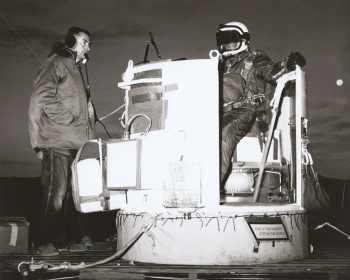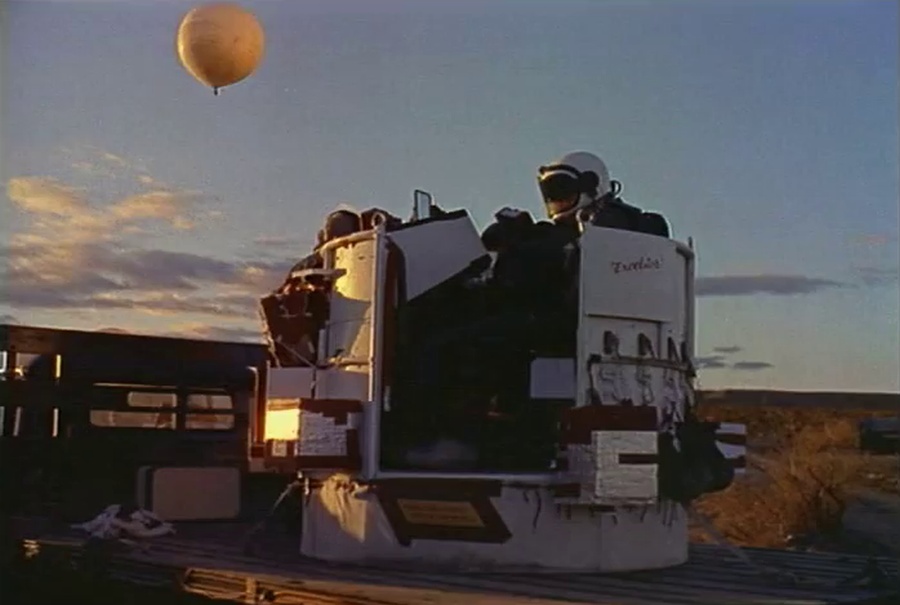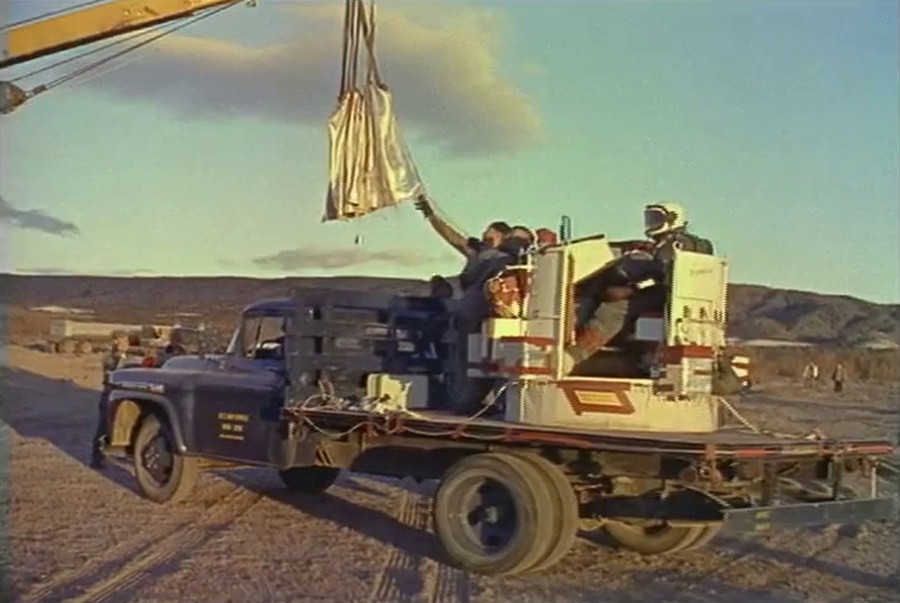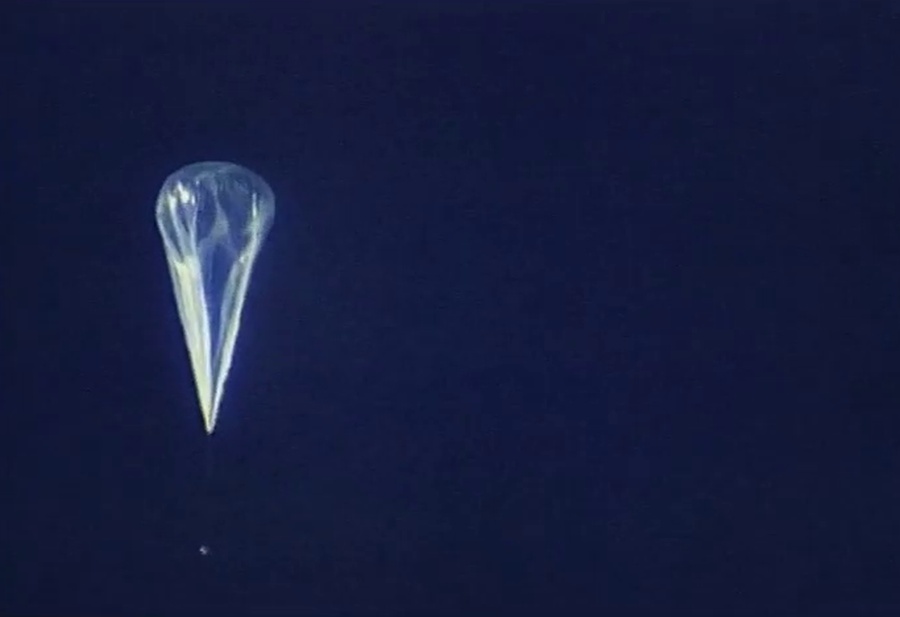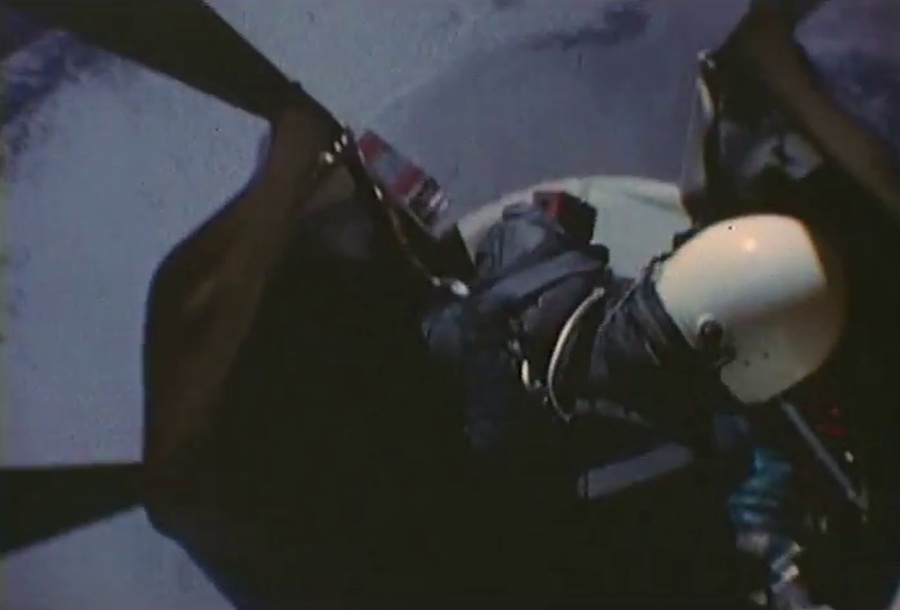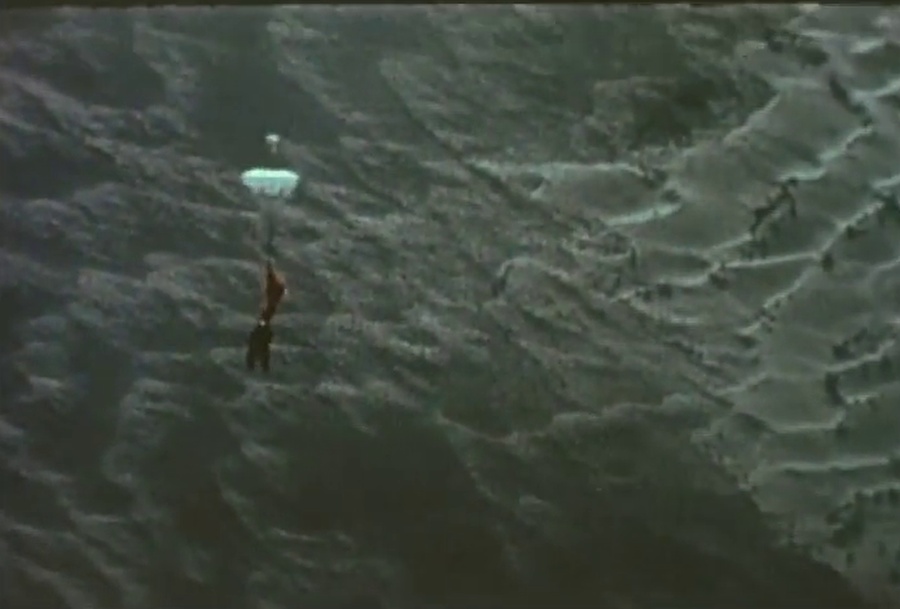Purpose of the flight and payload description
EXCELSIOR (Latin word for "higher" or "even upward") was an U.S. Air Force program, which was designed to test whether pilots could survive high-altitude bailouts.
Tests conducted by the Aeronautical Research Laboratory at Wright Air Development Center demonstrated that a falling body could reach the rate of 465 revolutions per minute about the vertical axis of the body while it was in the prone position. If a pilot bailed out at high altitude, he had little choice other than to fall. Therefore, equipment was needed to stabilize the jumper during the fall. In addition, this equipment needed to be tested to ensure that practicality agreed with theory.
Initially anthropomorphic dummies falling from planes and balloons were drafted as test subjects obtaining important data under the HIGH DIVE program.
Early psychological evaluations showed that pilots who bailed out had a tendency to try to remain with the last link of their aircraft: the seat. Thus man-seat separation devices were developed which 'threw' the pilot out of the ejection seat. Therefore, the next step was to stabilize the pilot with a drogue parachute.
Francis F. Beaupre developed a stabilization parachute which, in theory, would work . After bailout, the pilot would pull the 'orange apple,' which started the parachute deployment sequence. The first to deploy, after a few seconds delay, was an 18 inch pilot parachute. This, in turn, pulled out a 6 foot stabilization parachute, followed by three-quarters of the main parachute. When the person passed through a predetermined altitude, which in the early 1960s was determined to be 14,000 feet, the aneroid barometer would start the release sequence allowing the 28 foot diameter main parachute to fully deploy.
The Beaupre stabilization parachute worked at altitudes where jet aircraft were normally flying.
It then became necessary to see if the system would work at higher altitudes where the newly introduced X-15 and other research aircraft and space capsules would fly. Accordingly, the Aeromedical Research Laboratory at Holloman AFB began a series of parachute test using balloons, under the project's name EXCELSIOR.
The three jumps were made by then Captain Joseph W. Kittinger Jr., from an open gondola hanging from a stratospheric balloon so he wore a full pressure suit.
Video footage of the mission
Details of the balloon flight
Balloon launched on: 11/16/1959
Launch site: Holloman Air Force Base, Alamogordo, New Mexico, US
Balloon launched by: Balloon Branch, Holloman Air Force Base (HAFB)
Balloon manufacturer/size/composition: Zero Pressure Balloon General Mills - 2.000.000 cuft (2.0 Mils. Tailored Tapeless)
Flight identification number: HAFB Nº 1088
End of flight (L for landing time, W for last contact, otherwise termination time): 11/16/1959
Overall weight: 2565 lbs
The first flight was done on 16 November 1959, from a point north of Truth or Consequences, New Mexico. Attached to Kittinger were electrodes for monitoring his heart beat and his respiration. A radio for communications and in-flight recording of data was contained in the seat instrument pack. He wore a Beaupre backpack parachute and an automatic chestpack reserve parachute. Kittinger was seated on a styrofoam seat which had holes containing water bottles cut in the foam. The styrofoam furnished insulation and the water provided heat.
External support for this mission, called Excelsior I, was provided by a B-57 aircraft that would take photographs during the ascent. Also a C-123 was airborne for support at medium altitudes, and a helicopter gave low altitude support. Numerous cameras were used for this mission, placed in the aircrafts, the balloon, and on Captain Kittinger itself.
Upon reaching the predetermined jump altitude, Kittinger found he had difficulty getting up from his seat. When the water bottles froze, they expanded and were holding the instrumentation kit attached to him to the seat. In the process of trying to stand up, which took 11 seconds, he accidently activated the timer for the stabilization parachute. This early activation of the timer caused the pilot parachute to deploy before his falling body had gained enough speed to properly deploy the system. It was supposed to deploy 16 seconds after Kittinger left the gondola, but actually deployed at two and one-half seconds after he jumped and the main parachute wrapped around Kittinger's neck and he could not get it unwrapped. He started to spin uncontrollably, until the centrifugal forces caused him to lose consciousness.
Nevertheless, the aneroid opened the reserve parachute at an elevation of 11,000 feet and the canopy was fully deployed at 10,000 feet, which was only 6,000 feet above the ground.
Beaupre's modifications to the reserve parachute saved Kittinger's life.
External references
- A life in pictures: Joe Kittinger Orlando Sentinel website
- Balloon Branch Record U.S. National Archives
- Come Up and Get Me: An Autobiography of Colonel Joe Kittinger book by Craig Ryan
- Discussion of Project Excelsior Proceedings of the National Conference on the Peaceful Uses of Space (2nd) Held in Seattle, Washington on May 8-10, 1962, Page 249
- Excelsior Gondola exhibited at the National Museum of the USAF
- Fastest Skydiver Joseph Kittinger Aerospaceweb.org
- Joseph W. Kittinger and the Highest Step in the World an article by Gregory Kennedy
- Profile of Joe Kittinger at Red Bull Stratos website
908If you consider this website interesting or useful, you can help me to keep it up and running with a small donation to cover the operational costs. Just the equivalent of the price of a cup of coffee helps a lot.

